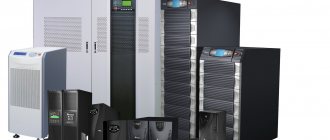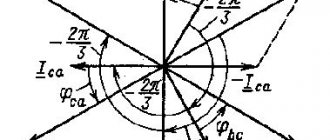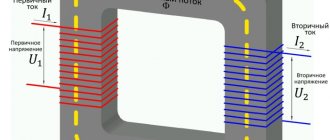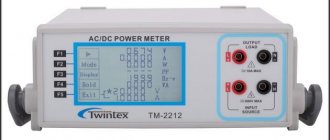Question 4. Define the term “Consumer of Electrical Energy”.
Questions and answers for preparation
Electrical personnel to test knowledge of electrical safety
Question 1. Define the term “electrical safety”
Answer. Electrical safety is a system of organizational and technical measures and means that ensure the protection of people from the harmful and dangerous effects of electric current, electric arc, electromagnetic field and static electricity.
Question 2. Define the term “electrical installation ”.
Answer. Electrical installations are a set of machines, apparatus, lines and auxiliary equipment (together with the structures and premises in which they are installed) intended for the production, transformation, transformation, transmission, distribution of electrical energy and its conversion into another type of energy. According to electrical safety conditions, electrical installations are divided into electrical installations with voltages up to 1000 V and electrical installations with voltages above 1000 V.
The electrical installation of a building is a set of interconnected electrical equipment within a building or room.
Question 3. Define the term “electrical equipment”.
Answer. Electrical equipment – equipment intended for the production, conversion, transmission, distribution or consumption of electrical energy.
Question 4. Define the term “Consumer of Electrical Energy”.
Answer. Electric energy consumer is an enterprise, organization, institution, geographically isolated workshop, construction site, apartment in which electrical energy receivers are connected to the electrical network and use electrical energy.
Question 5. Define the term “Receiver of electrical energy».
Answer. An electrical receiver is electrical equipment that converts electrical energy into another type of energy for its use.
Question 6. How are electrical installations divided according to their protection from atmospheric influences?
Answer. Electrical installations can be open or outdoor, not protected by the building from atmospheric influences.
Electrical installations protected only by canopies and mesh fences are considered external.
Closed or internal - placed inside a building that protects them from atmospheric influences.
Question 7 . Describe electrical premises .
Answer. Electrical rooms are rooms or parts of a room fenced off, for example, with nets, accessible only to qualified service personnel, in which electrical installations are located.
Dry rooms are rooms in which the relative air humidity does not exceed 60%.
Wet rooms - the relative air humidity in them is more than 60%, but does not exceed 75%.
Damp rooms - the relative air humidity in them exceeds 75% for a long time.
Particularly damp - relative air humidity is close to 100%;
Hot rooms, where the temperature constantly or periodically (more than 1 day) exceeds +35°C.
In dusty rooms, due to production conditions, process dust is released in such quantities that it can settle on wires and penetrate into machines and devices.
In rooms with a chemically active or organic environment, aggressive vapors, gases, liquids are constantly or for a long time contained, deposits or mold are formed that destroy the insulation of electrical equipment.
Question 8 . Categories of premises in relation to the danger of electric shock to people.
Answer. With regard to the danger of electric shock to people, there are:
Premises without increased danger, in which there are no conditions that create increased or special danger.
Premises with increased danger are characterized by the presence of one of the following conditions that create increased danger:
dampness;
conductive dust;
conductive floors (metal, earthen, reinforced concrete, brick, etc.):
heat;
the possibility of simultaneous human touch to metal structures connected to the ground, technological devices, on the one hand, and to metal housings of electrical equipment, on the other.
Particularly hazardous premises are characterized by the presence of one of the following conditions that create a particular danger: special dampness, a chemically active or organic environment, or two or more conditions of increased danger at the same time.
In terms of the danger of electric shock to people, the areas where outdoor electrical installations are located are equated to particularly dangerous premises.
Question 9. How is it possible to easily recognize parts belonging to individual elements of an electrical installation??
Answer In electrical installations it must be possible to easily recognize the parts belonging to their individual elements:
simplicity and clarity of diagrams, proper arrangement of electrical equipment, inscriptions, markings, colors.
Tires must be marked:
With alternating three-phase current: phase A bus - yellow, phase B - green, phase C - red, zero operating N - blue, zero protective bus - longitudinal stripes of yellow and green;
With single-phase alternating current: bus A, connected to the beginning of the source winding, is yellow, and bus B, connected to the end of the winding, is red.
With direct current: positive bus (+) - in red, negative (-) - in blue and zero operating M - in blue.
Question 10. How are power receivers divided in relation to ensuring the reliability of power supply?
Answer. With regard to ensuring the reliability of power supply, power receivers are divided into three categories.
Electrical receivers of category I are electrical receivers, the interruption of power supply to which may entail: danger to human life, damage to expensive capital equipment, mass defects of products, disruption of the functioning of particularly important elements of public utilities.
From category I electrical receivers, a special group is distinguished, the uninterrupted operation of which is necessary for an accident-free shutdown of production in order to prevent threats to human life, explosions, fires and damage to expensive capital equipment.
Category I power receivers are provided with electricity from two independent, mutually redundant power sources, and an interruption in their power supply in the event of a power failure from one of the power sources can only be allowed for the duration of automatic power restoration.
To supply power to a special group of category I electrical receivers, additional power is provided from a third independent, mutually redundant power source.
Category II electrical consumers are electrical consumers whose power supply interruption leads to a massive undersupply of products, massive downtime of workers and machinery, and disruption of the normal activities of a significant number of urban and rural residents.
It is recommended to supply power receivers of category II with electricity from two independent, mutually redundant power sources. A power break is permissible for the time necessary to turn on the backup power by the actions of the duty personnel or the mobile operational team. It is possible to supply power to one overhead line, one cable line, one transformer, but the time for emergency repairs is no more than a day.
Electrical receivers of category III - all others that do not fit the definitions of categories I and II.
For category III electrical receivers, power supply can be provided from a single power source, provided that power supply interruptions necessary to repair or replace a damaged element of the power supply system do not exceed one day.
Application area. Definitions
1.2.1. This chapter of the Rules applies to all power supply systems.
Power supply systems for underground, traction and other special installations, in addition to the requirements of this chapter, must also comply with the requirements of special rules.
1.2.2. An energy system (energy system) is a set of power plants, electrical and thermal networks interconnected and connected by common modes in the continuous process of production, conversion, transmission and distribution of electrical and thermal energy with general control of this mode.
1.2.3. The electrical part of the power system is a set of electrical installations of power stations and electrical networks of the power system.
1.2.4. An electrical power system is the electrical part of the power system and the electrical energy receivers powered by it, united by the common process of production, transmission, distribution and consumption of electrical energy.
1.2.5. Electricity supply - providing consumers with electrical energy.
The power supply system is a set of electrical installations designed to provide consumers with electrical energy.
Centralized power supply - power supply to consumers of electrical energy from the power system.
1.2.6. An electrical network is a set of electrical installations for the transmission and distribution of electrical energy, consisting of substations, switchgears, conductors, overhead and cable power lines operating in a certain territory.
1.2.7. An electrical energy receiver (electric receiver) is a device, unit, etc., designed to convert electrical energy into another type of energy.
1.2.8. An electrical energy consumer is an electrical receiver or a group of electrical consumers united by a technological process and located in a certain area.
1.2.9. The normal mode of an electrical energy consumer is a mode in which the specified values of its operating parameters are ensured.
Post-emergency mode is the mode in which the consumer of electrical energy is located as a result of a disruption in its power supply system until the establishment of a normal mode after localization of the failure.
1.2.10. An independent power source is a power source on which the voltage is maintained in post-emergency mode within regulated limits when it disappears on another or other power sources.
Independent power sources include two sections or bus systems of one or two power plants and substations, subject to the simultaneous fulfillment of the following two conditions:
- each of the sections or bus systems in turn is powered by an independent power source;
- sections (systems) of buses are not interconnected or have a connection that is automatically switched off if the normal operation of one of the sections (systems) of buses is disrupted.
General requirements
1.2.11. When designing power supply systems and reconstructing electrical installations, the following issues should be considered:
- prospects for the development of energy systems and power supply systems, taking into account the rational combination of newly constructed electrical networks with existing and newly constructed networks of other voltage classes;
- ensuring an integrated centralized power supply to all consumers of electrical energy located within the coverage area of electrical networks, regardless of their affiliation;
- limitation of short-circuit currents to limit levels determined for the future;
- reduction of electrical energy losses;
- compliance of decisions made with environmental protection conditions.
At the same time, external and internal power supplies should be considered in combination, taking into account the capabilities and economic feasibility of technological redundancy.
When addressing redundancy issues, one should take into account the overload capacity of electrical installation elements, as well as the availability of reserves in process equipment.
1.2.12. When addressing issues of development of power supply systems, repair, emergency and post-emergency modes should be taken into account.
1.2.13. When choosing independent, mutually redundant power sources that are objects of the power system, one should take into account the likelihood of a simultaneous dependent short-term decrease or complete disappearance of voltage during the operation of relay protection and automation in the event of damage in the electrical part of the power system, as well as a simultaneous long-term loss of voltage on these power sources during severe system failures. accidents.
1.2.14. Requirements 1.2.11-1.2.13 must be taken into account at all intermediate stages of development of energy systems and power supply systems.
1.2.15. The design of electrical networks should be carried out taking into account the type of their service (permanent duty, duty at home, mobile teams, etc.).
1.2.16. The operation of electrical networks with a voltage of 2-35 kV can be provided either with an isolated neutral or with a neutral grounded through an arc suppression reactor or resistor.
Compensation for capacitive ground fault current should be applied for the values of this current in normal modes:
- in networks with a voltage of 3-20 kV, having reinforced concrete and metal supports on overhead power lines, and in all networks with a voltage of 35 kV - more than 10 A;
- in networks that do not have reinforced concrete and metal supports on overhead power lines: more than 30 A at a voltage of 3-6 kV;
- more than 20 A at a voltage of 10 kV;
- more than 15 A at a voltage of 15-20 kV;
in generator voltage circuits of 6-20 kV generator-transformer blocks - more than 5A.
For ground fault currents of more than 50 A, it is recommended to use at least two grounding reactors.
The operation of electrical networks with a voltage of 110 kV can be provided with both a solidly grounded and an effectively grounded neutral.
Electrical networks with voltages of 220 kV and higher must operate only with a solidly grounded neutral.
Voltage levels and regulation, reactive power compensation
1.2.22. For electrical networks, technical measures should be provided to ensure the quality of electrical energy in accordance with the requirements of GOST 13109.
1.2.23. Voltage regulation devices must ensure that the voltage on buses with a voltage of 3-20 kV of power plants and substations to which distribution networks are connected is maintained within a range of not less than 105% of the rated value during the period of highest loads and not higher than 100% of the rated value during the period of least load of these networks. Deviations from the specified voltage levels must be justified.
1.2.24. The selection and placement of reactive power compensation devices in electrical networks are made based on the need to ensure the required network capacity in normal and post-emergency modes while maintaining the required voltage levels and stability margins.











